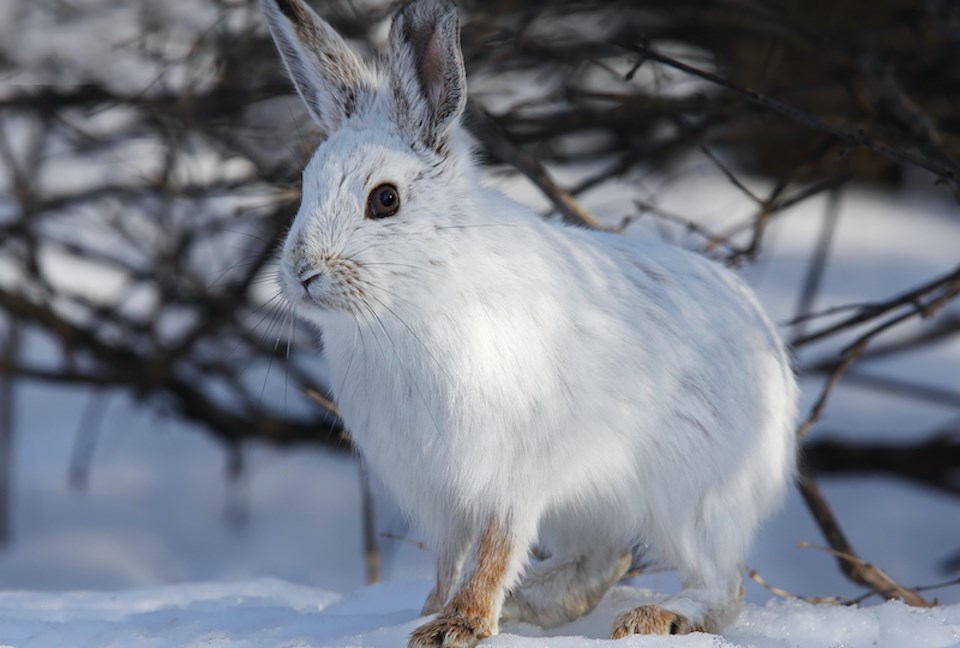One of the most adorable critters roaming through the B.C. wilderness has an unexpected appetite — for flesh.
Snowshoe hares, beloved for their ivory fur and the way they effortlessly bound across deep snow, appear quite innocent-looking, with big, dark eyes and a quintessential, twitching "bunny" nose.
But the forest dwellers aren't strictly herbivores, unlike their rabbit cousins.
Indeed, these alabaster buns opportunistically dine on whatever they can get their mouths on, which typically includes a range of vegetation during the spring and summer and bark in the winter.
Dr. Stan Boutin, a biology professor at the University of Alberta, told V.I.A. that snowshoe hares will scavenge meat but that "it is rare and they don't hunt live animals."
Trail camera recordings and photographs also show the animals engaging in cannibalistic acts. That's right — the beguiling, ivory bunnies will scavenge hare corpses when they are hungry. They have also been recorded dining on the flesh of their main predator, the Canadian lynx, which National Geographic characterizes as an "ironic twist on natural selection."
In other words, you won't have to worry about an agile hare leaping onto Fido from behind during your next hike; the critters simply take advantage of easy meals when they come across them. They also aren't very big, weighing an average of two to four pounds and measuring about 16 to 20 inches long, according to the Nature Conservatory of Canada (NCC).
What makes the snowshoe hares a unique species in Canada
While they resemble rabbits, snowshoe hares have some unique traits, most notably their "large snowshoe feet" that help them traverse deep snow with ease. They are distributed across B.C.'s conifer forests, but are rarely spotted in the southern part of the province, said Boutin, who added that it is also "unlikely that they would ever be seen in [Metro Vancouver].
The hare population size can also increase 40- to 50-fold with population peaks every decade, he noted.
The Government of the Northwest Territories notes that lynx and snowshoe hare populations are closely intertwined. When hare populations peak, "lynx eat little else and take about two hares every three days." As the hare population drops, the lynx population sees a steady decline.
But snowshoe hares have one important defense against predators.
The animals' coats change to white in the winter, allowing them to blend in with their frosty surroundings. Once the snow melts, they turn a light brown or grey colour.
While you might spot more than a few white rabbits hopping around the Lower Mainland — Jericho Beach is home to many of them — these aren't of the snowshoe variety, and most of them are pets that people have released into the wild.
The abandonment of domestic rabbits into the wild is a criminal act under the Criminal Code of Canada and an offense under the Prevention of Cruelty to Animals Act. While rabbits are smart, sociable little beings who make awesome pets, potential guardians should be aware of the commitment involved when adopting one.





